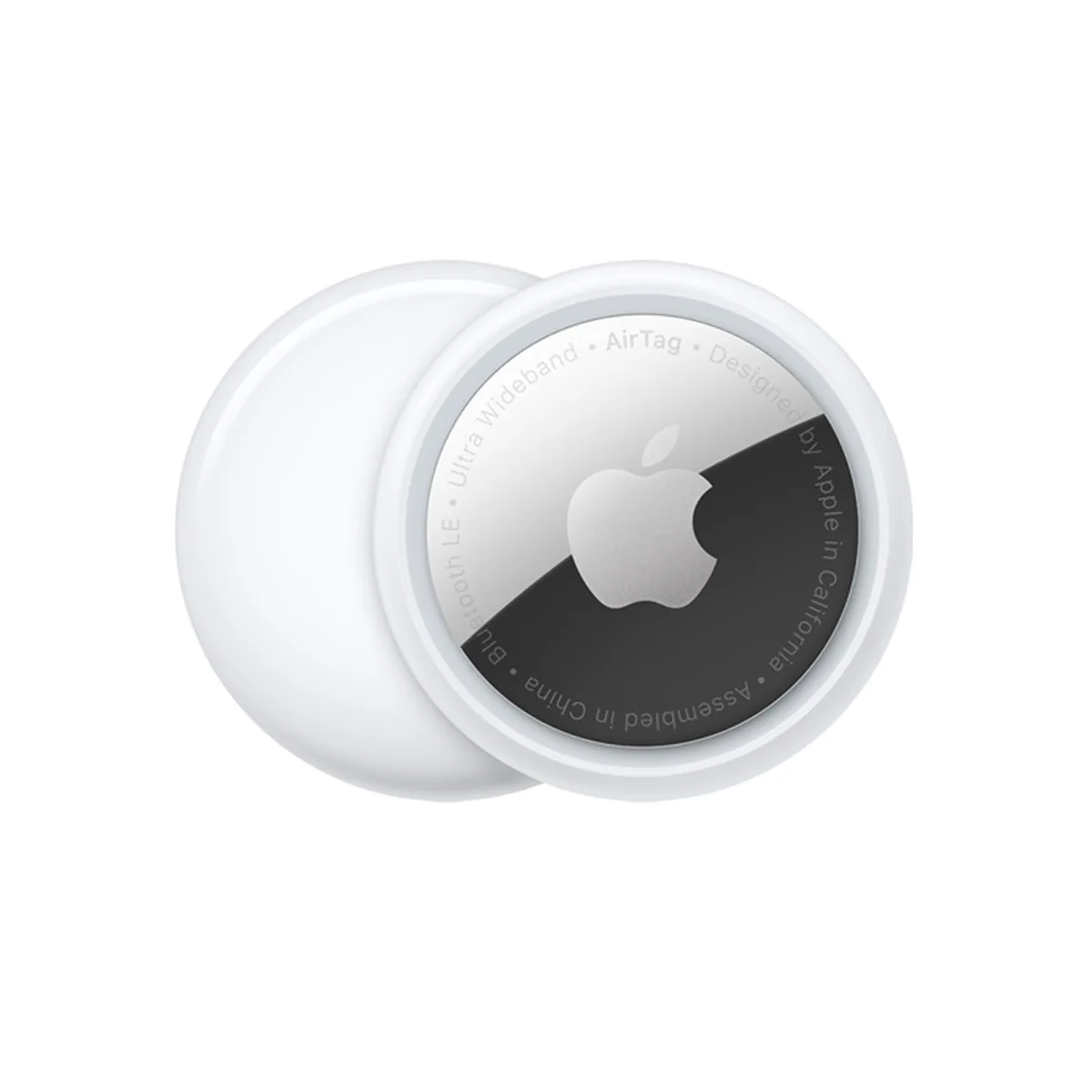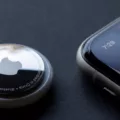AirTags, the latest addition to Apple’s ecosystem, have created quite a buzz among tech enthusiasts and consumers alike. These small, coin-shaped devices are designed to help you keep track of your belongings, but do they have GPS capabilities? Let’s delve into this question and explore the features and limitations of AirTags.
To put it simply, AirTags do not have built-in GPS technology. Unlike dedicated GPS tracking devices, AirTags rely on Bluetooth technology to connect with your iPhone or other Apple devices. This means that their tracking range is limited to the Bluetooth range, which is typically around 30 feet.
When you attach an AirTag to an item, such as your keys or wallet, it will periodically emit a Bluetooth signal. If you misplace the item, you can use the Find My app on your iPhone to locate it. The app will display the last known location of the AirTag based on the Bluetooth signal it received. This can help you narrow down the search area and find your lost item.
However, it’s important to note that AirTags can only be tracked within Bluetooth range. If your lost item is out of range, the Find My app won’t be able to provide you with its location. This means that AirTags may not be suitable for tracking items that are frequently moved or taken outside of Bluetooth range, such as cars or bikes.
But here’s the interesting part. If someone else with an iPhone comes within Bluetooth range of your lost AirTag, their device can anonymously relay its location to you. This is made possible through Apple’s vast network of devices, creating a community of “Find My” users. So even if your AirTag is hundreds of miles away or even in another country, you may still be able to track it as long as it’s in range of someone else’s iPhone.
It’s worth mentioning that Android users can also detect the presence of an AirTag nearby through the Tracker Detect app released by Apple. However, this app only works when it’s open, and Android users will not receive notifications automatically like iPhone users do.
While AirTags may not have GPS capabilities like dedicated tracking devices, they offer a convenient solution for keeping tabs on your everyday items within Bluetooth range. From keys to bags, AirTags can help you locate your belongings quickly and easily using the Find My app.
AirTags do not have GPS technology but rely on Bluetooth connectivity to track your items. Their range is limited to around 30 feet, and they can be tracked within this range using the Find My app on your iPhone. However, if your AirTag is out of Bluetooth range, its location cannot be determined. Despite this limitation, AirTags provide a practical and user-friendly solution for keeping track of your belongings within a limited range.

Can You Use An AirTag As A GPS?
AirTags cannot be used as a GPS tracking device for cars. While AirTags are small and convenient tracking devices, they are not designed for real-time GPS tracking like dedicated GPS devices. Here are a few reasons why AirTags are not suitable for GPS tracking:
1. Limited range: AirTags use Bluetooth technology to connect with your iPhone or iPad. The range of Bluetooth is typically limited to a few hundred feet, which means that you can only track your car if it is within this range. GPS devices, on the other hand, can track your vehicle’s location anywhere within the coverage area.
2. No real-time tracking: AirTags rely on the Find My app on your iPhone or iPad to track their location. This means that you can only see the last known location of the AirTag on a map. GPS tracking devices, on the other hand, provide real-time tracking, allowing you to monitor your car’s location continuously.
3. Dependence on Apple devices: AirTags are specifically designed to work with Apple devices, such as iPhones and iPads. This limits their compatibility and functionality compared to GPS devices that can work with various platforms and devices.
4. Limited battery life: AirTags have a built-in non-replaceable battery that lasts for about a year. This limited battery life makes them impractical for long-term GPS tracking, especially for vehicles that may require continuous monitoring for extended periods.
While AirTags offer a convenient way to keep track of personal belongings like keys or wallets, they are not designed or suitable for GPS tracking of cars. Dedicated GPS tracking devices provide more comprehensive and reliable tracking capabilities for vehicles.
How Far Do AirTags Locate?
AirTags have a Bluetooth range of approximately 30 feet. However, it’s important to note that this range can vary depending on various factors such as the thickness of walls or other obstructions in the environment.
To locate your AirTag, you can start by opening the Find My app on your iPhone and selecting the Items tab. This will allow you to see the location of your AirTag on a map. If you have an iPhone 11 or a later model, you can take advantage of Precision Tracking.
Precision Tracking is a feature that utilizes the Ultra-Wideband (UWB) technology in newer iPhones to provide more accurate location information. With Precision Tracking enabled, the Find My app can give you more precise directions and even guide you to the exact location of your AirTag.
The Bluetooth range of AirTags is typically around 30 feet, but this can vary depending on environmental conditions. The Find My app can help you locate your AirTag, and if you have a compatible iPhone model, Precision Tracking can provide more accurate location information.
Do AirTags Work Long Distance?
AirTags are equipped with Bluetooth technology, allowing them to communicate with nearby iPhones. The range of Bluetooth, however, is limited, typically reaching up to 100 meters (or about 330 feet). This means that if you are within this range of an AirTag, you can easily locate it using the Find My app on your iPhone.
However, AirTags can work long distance indirectly. Let me explain how:
1. Crowd Finding: AirTags utilize a feature called “crowd finding,” which takes advantage of the vast network of iPhones around the world. When an AirTag is separated from its owner, it can communicate with any nearby iPhone that has Bluetooth enabled. This iPhone will then relay the location information of the AirTag back to its owner, without the person using the iPhone even realizing it. This indirect connection extends the potential range of AirTags far beyond the limited Bluetooth range.
2. Global Tracking: If you leave an AirTag behind in a location far away from you, it can still be detected by other people’s iPhones as long as they are within Bluetooth range. This means that if someone with an iPhone passes by the AirTag, their phone will pick up its signal and update its location on the Find My app. So, even if you are hundreds or even thousands of miles away, as long as there are iPhones nearby, you can still track the location of your AirTag.
3. International Tracking: AirTags can be located internationally, thanks to the vast network of iPhones worldwide. If someone in another country comes into proximity with your AirTag, their iPhone will pick up the signal and update the location on the Find My app. This makes it possible to track your AirTag even when it’s in a different country.
It’s important to note that AirTags rely on the presence of iPhones with the Find My app and Bluetooth enabled to relay location information. If your AirTag is in an area with few iPhones or where Bluetooth is not widely used, the tracking range may be limited. Additionally, keep in mind that AirTags are not equipped with cellular or GPS capabilities, so their range is ultimately dependent on the network of iPhones in the area.
While AirTags have a limited Bluetooth range, they can work long distance by leveraging the crowd-finding feature and the vast network of iPhones worldwide. This allows you to track the location of your AirTag even when it’s hundreds of miles away or in a different country, as long as there are iPhones nearby with Bluetooth enabled.
Do Apple AirTags Track Location?
Apple AirTags have the capability to track the location of items they are attached to. AirTags use Bluetooth technology to connect to nearby Apple devices, such as iPhones, and utilize the Find My app to help locate the tagged item.
When an AirTag is attached to an item, it can be paired with the user’s iPhone through the Find My app. This enables the user to track the location of the item through the app, providing real-time updates on its whereabouts.
AirTags also have a built-in speaker that can play a sound, making it easier to locate the tagged item if it’s nearby. Additionally, the Find My app allows users to put their AirTag into Lost Mode, which triggers notifications if the item is located by another Apple device user.
It’s important to note that AirTags rely on Bluetooth connectivity and the proximity of other Apple devices to accurately track the location of an item. If the AirTag is out of range of any Apple device, its location updates may not be as frequent or accurate.
To enhance the tracking capabilities of AirTags, Apple has introduced a feature called Precision Finding, which leverages the Ultra-Wideband (UWB) technology available on certain iPhone models. This feature provides more precise location information and can guide users to the exact location of their tagged item through on-screen directions.
Apple AirTags do track the location of items they are attached to through Bluetooth connectivity and the Find My app. They provide real-time updates, sound alerts, and the ability to put the AirTag into Lost Mode for increased chances of item recovery.
Conclusion
AirTags do not have built-in GPS technology. They rely on Bluetooth connectivity to communicate with nearby iPhones and utilize Apple’s Find My app for tracking purposes. The range of an AirTag is approximately 30 feet, depending on various factors such as obstacles and signal interference. While you can track an AirTag within this range, it is important to note that it cannot provide real-time location updates if it is outside of Bluetooth range. Precision Tracking, available on iPhone 11 and later models, can enhance the accuracy of locating an AirTag within Bluetooth range. However, it is crucial to understand that AirTags are not designed to replace dedicated GPS tracking devices for cars or long-distance tracking. For international tracking, AirTags can still be detected by other iPhones that are within Bluetooth range, allowing you to see their last known location. Android users can also use apps like Tracker Detect to scan for nearby AirTags, but it currently requires the app to be open. Therefore, while AirTags offer a convenient way to locate your belongings within a limited range, they do not provide the same comprehensive tracking capabilities as GPS devices.








